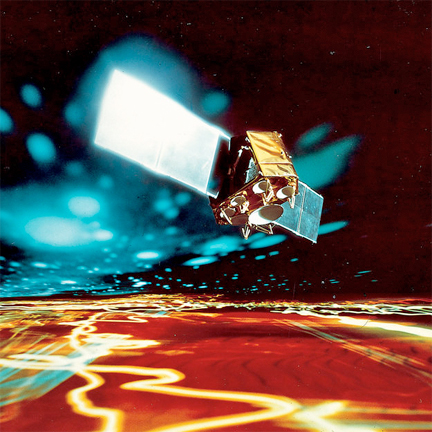
[SatNews] No matter how painstakingly we choose the materials to build satellites, once a mission is over they are just so much junk. But what if one day they could be recycled in space for future missions—perhaps as construction material, fuel or even food?
As part of its Clean Space initiative, ESA is looking for new ideas on materials that could be recycled or converted into different, useful resources for other processes.
It costs a lot to put anything into space – a payload typically costs its own weight in gold – and the further it travels out into the Solar System the more valuable it becomes. So recycling or converting space hardware for follow-on missions could bring significant added value.

In-orbit configuration of ESA's OTS-2 telecom satellite. Launched 12 May 1978, the highly successful OTS-2 was not retired from geostationary orbit until January 1991. ESA's Orbital Test Satellite (OTS) project demonstrated technologies and techniques for a new generation of telecommunications satellites, leading directly to the ECS and Marecs designs.
Image courtesy of ESA.
The idea is inspired by the sustainable ‘cradle to cradle’ approach explored by terrestrial industry in recent years, where all the raw materials in a product can be later reused for another product, or consumed as food, with no waste residue and no loss in quality.
Adapting this approach to space, future planetary probes or satellites might become sources of fuel, water or other raw materials considered scarce for the exploration missions that come after them.
Examples might include grinding down metal alloys into powder to serve as raw materials for manufacturing new hardware by 3D printing.
However, to enable such a widespread use of sustainable materials, future spacecraft might end up very different.
ESA’s new invitation for ‘Sustainable Materials Concepts’ is seeking companies to study various concepts of this approach, including considering the kinds of materials that could be reused as biological or technical nutrients – serving as resources for new other processes.
Also under consideration: what sustainable materials might replace current space-grade materials such as titanium and aluminium alloys or carbon-fibre epoxy resins? And how might the use of materials as biological or technical nutrients work in practice?
What level of energy might be required for such conversion processes? Would ‘slow manufacturing’ following the example of nature be a way forward?
For more information, review the invitation package that's accessible via ESA’s Electronic Mailing Invitation to Tender System (EMITS).

